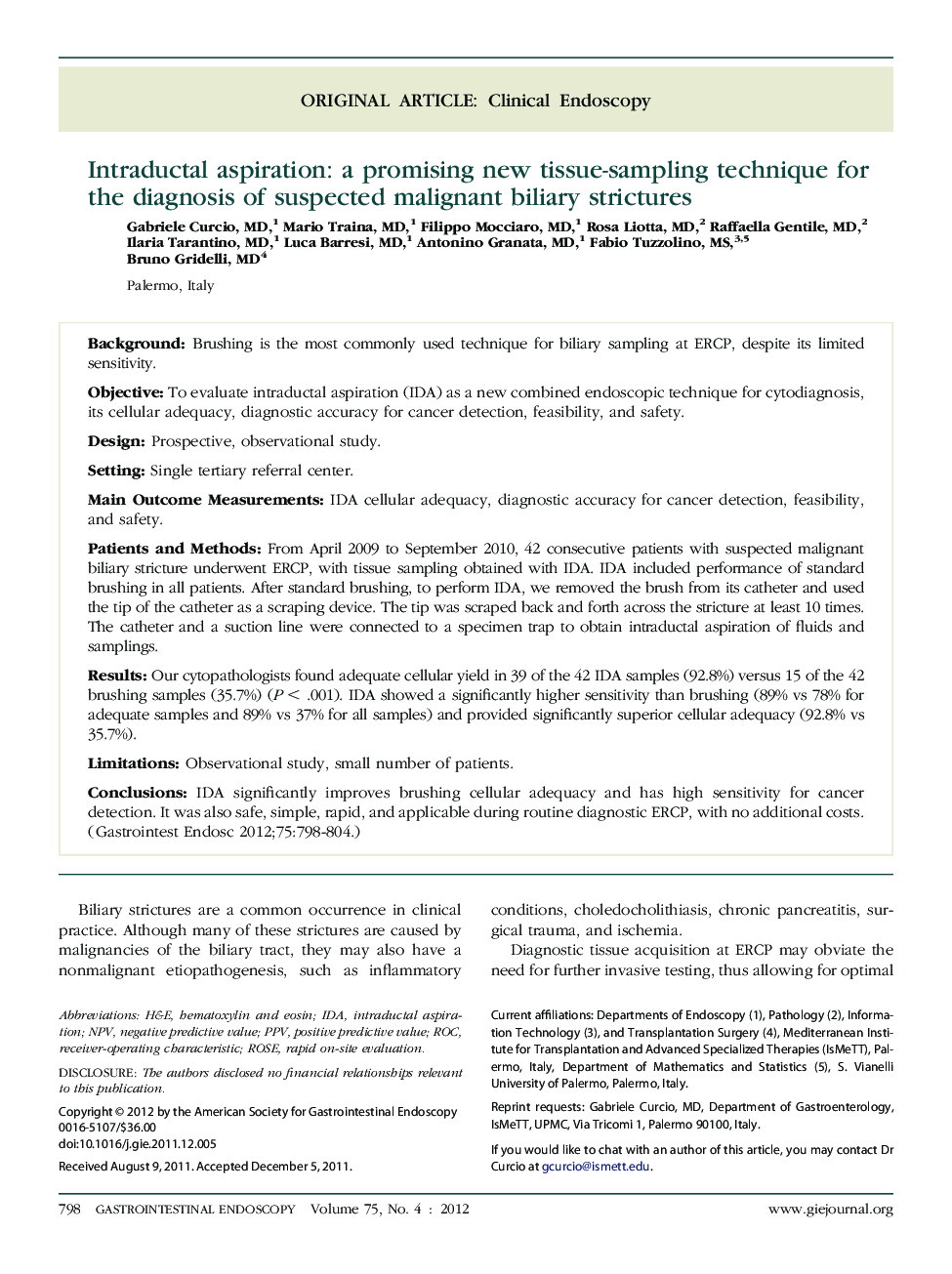| Article ID | Journal | Published Year | Pages | File Type |
|---|---|---|---|---|
| 3305119 | Gastrointestinal Endoscopy | 2012 | 7 Pages |
BackgroundBrushing is the most commonly used technique for biliary sampling at ERCP, despite its limited sensitivity.ObjectiveTo evaluate intraductal aspiration (IDA) as a new combined endoscopic technique for cytodiagnosis, its cellular adequacy, diagnostic accuracy for cancer detection, feasibility, and safety.DesignProspective, observational study.SettingSingle tertiary referral center.Main Outcome MeasurementsIDA cellular adequacy, diagnostic accuracy for cancer detection, feasibility, and safety.Patients and MethodsFrom April 2009 to September 2010, 42 consecutive patients with suspected malignant biliary stricture underwent ERCP, with tissue sampling obtained with IDA. IDA included performance of standard brushing in all patients. After standard brushing, to perform IDA, we removed the brush from its catheter and used the tip of the catheter as a scraping device. The tip was scraped back and forth across the stricture at least 10 times. The catheter and a suction line were connected to a specimen trap to obtain intraductal aspiration of fluids and samplings.ResultsOur cytopathologists found adequate cellular yield in 39 of the 42 IDA samples (92.8%) versus 15 of the 42 brushing samples (35.7%) (P < .001). IDA showed a significantly higher sensitivity than brushing (89% vs 78% for adequate samples and 89% vs 37% for all samples) and provided significantly superior cellular adequacy (92.8% vs 35.7%).LimitationsObservational study, small number of patients.ConclusionsIDA significantly improves brushing cellular adequacy and has high sensitivity for cancer detection. It was also safe, simple, rapid, and applicable during routine diagnostic ERCP, with no additional costs.
